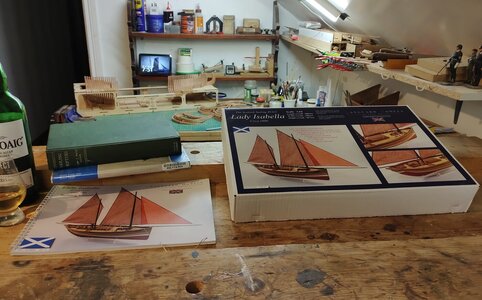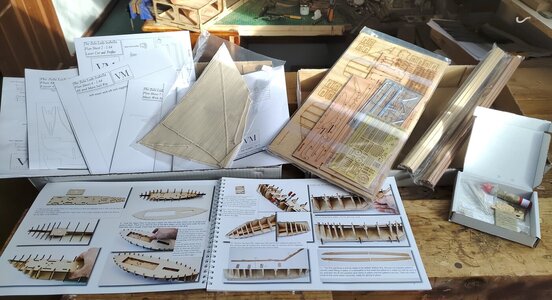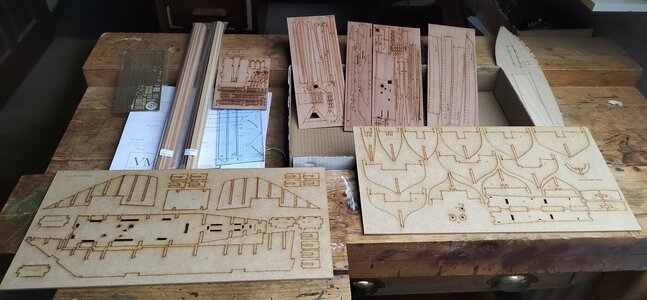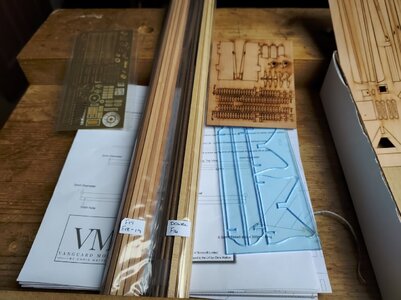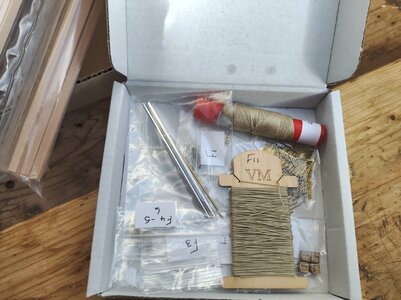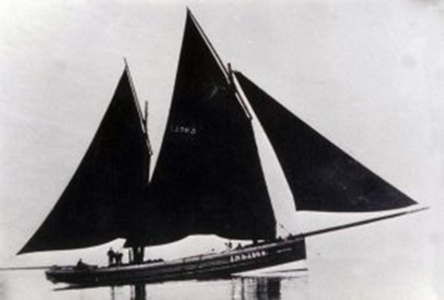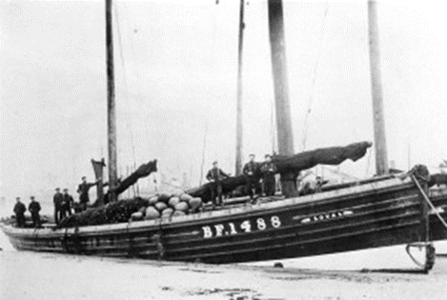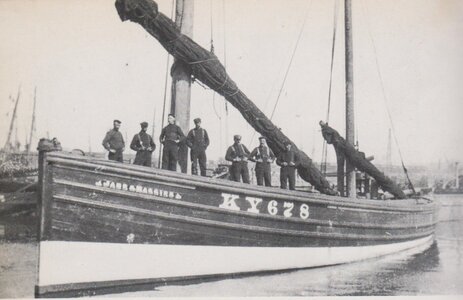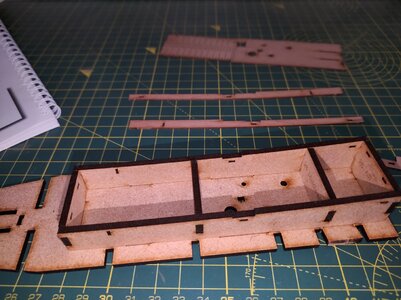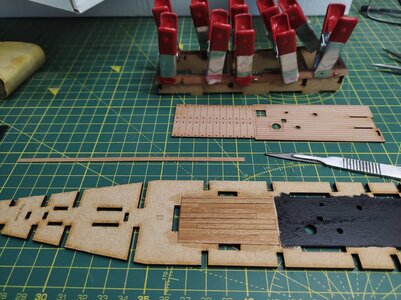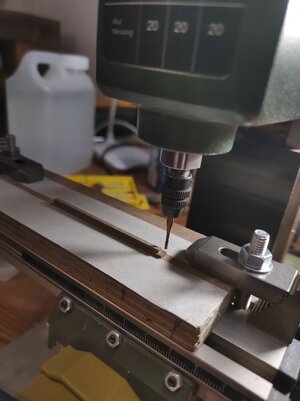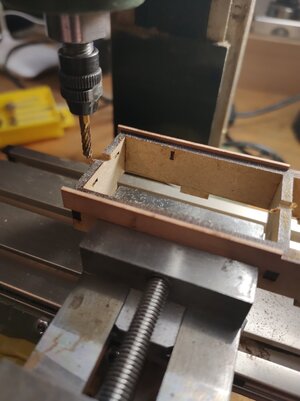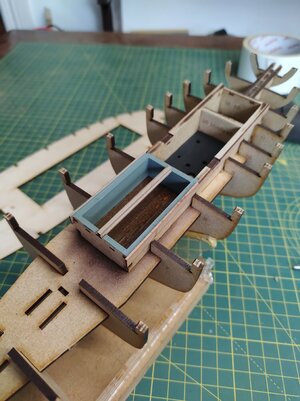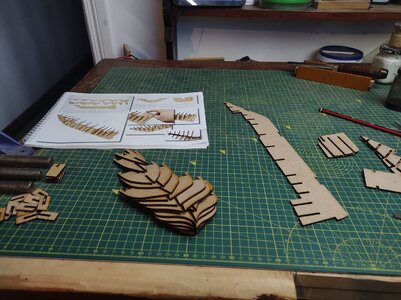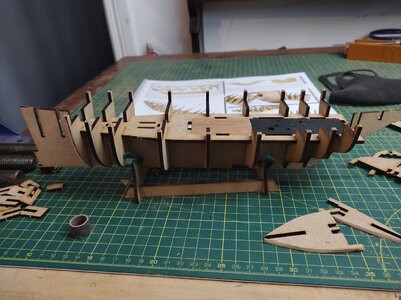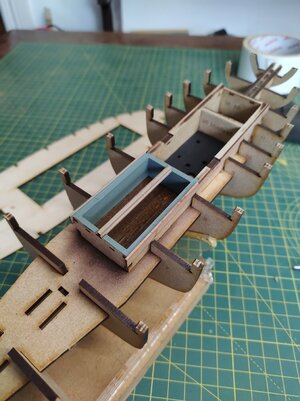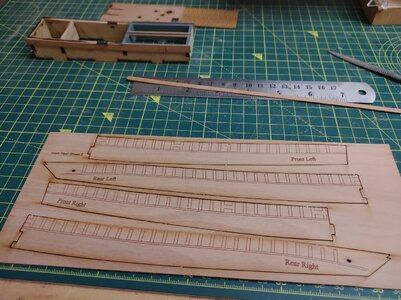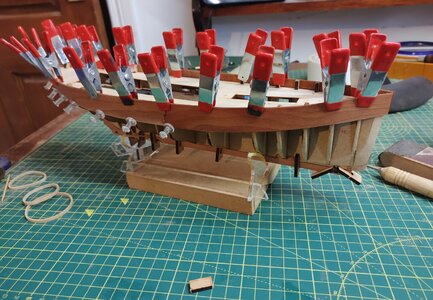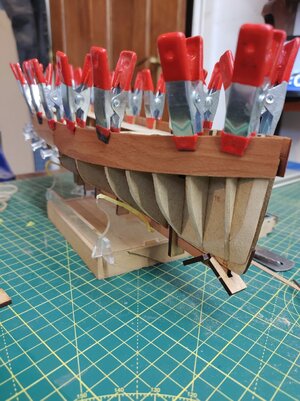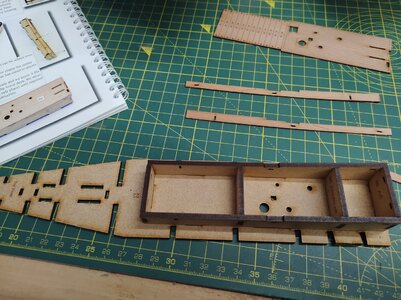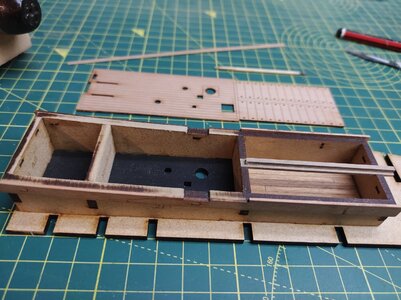View attachment 333115
The boat above is a Fifie not Zulu, the two types where great rivals, and by the turn of the 19th century both types had grown in size to around eighty feet. This picture gives an idea of just how big they where.
Well finally finished fitting the frames into Blandford so have a few days waiting while the PVA hardens totally, so I made a start on the Zulu yesterday. In truth there is nothing very exciting to report, I have just been following the instruction book and every thing has come together as described. I, as suggested started with the net hold and cabin cockpit. Here I have left my options open as to whether I will leave the net hold covered as per the kit or open it and display some drifting gear.
My first thoughts on displaying this lovely wee boat was to show her just ready to shoot her nets. That would be with her fore mast dropped down onto its crutch thus reducing the rolling, her main sail would be fully furred as would be her fore sail, boom retracted. The mizzen sail would be reefed up just enough to keep her to the wind. But according to EJ March's 'Sailing Drifters' that was not how it was done. As well as I have said they also dropped the mizzen sail and removed the rudder! I cant imagine how difficult a job that would be, even on a calm night. However after seeing the size of the sails (huge) I am considering showing them in full.
Here are some pictures of my progress so far.
View attachment 333144View attachment 333147View attachment 333148View attachment 333150View attachment 333153View attachment 333154View attachment 333156View attachment 333158View attachment 333159View attachment 333160View attachment 333161 The inner bulwarks are only attached temporally after soaking in hot water. hopefully they will take a bit of the bend when they dry by tomorrow. If I have some free time later I will make a start on the main mast, it has to be turned from square as the foot remains that way. I cannot emphasise too much the very high quality of this kit, particularly the laser cutting which is both very fine and perfectly square, not like some I have seen recently.
There are no remaining Zulus afloat, ( there is the hull of one called 'Research' on display in the Scottish Fisheries Museum, but it is in such bad condition it makes the remains of the Wasa look like a new build). One Fifie still sails and there is a great video of her in full flow, well worth a watch as it shows what monsters these big luggers where. You can find it here
it is in two parts but the second part is the best.
Well back to work. JJ.
View attachment 333145

